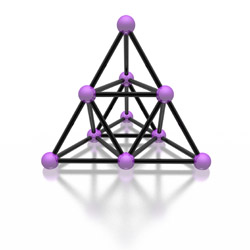Improving on the attraction of nanomagnets
Growing information technology (IT) needs require the development of nanoscale materials with enhanced storage capacity. Research has focused on single molecule magnets (SMMs) – metal compounds that retain magnetisation in the absence of a magnetic field – which will contribute to the advancements of quantum computing. The synthesis and characterisation of complexes or cages that display nanomagnetic SMM features is still a major challenge. The main aim of the EU-funded project ‘Cage complexes with phosphonates’ (Cacophos) was to use phosphonates to link metal cages together. Using X-ray crystallography, scientists studied these molecules and examined their magnetic and spectroscopic properties. The resulting cage complexes consisted of a polyhedral shape with a hollow central cavity. Study results showed that various metals such as copper, iron and cobalt could be used in the reactions with phosphonates as block sites on the metal ions controlling the symmetry and stoichiometry of the products. This is a very promising approach for producing high symmetry cages. Cages containing up to 23 Manganese centres were constructed and preliminary results indicated that several of these complexes were SMMs. An important finding of the Cacophos project was the generation of polyoxo donor ligands from phosphonate condensation with nickel precursors. Overall, the Cacophos project provided novel methods for constructing polynuclear metallic cages that can serve as SMMs or catalysts in various chemical reactions. Study findings are believed to have significant technological impact in modern chemistry and IT.



